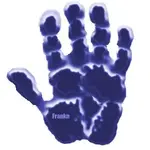SilverFinger
Sr. Member
- Joined
- Apr 17, 2008
- Messages
- 326
- Reaction score
- 158
- Golden Thread
- 0
- Location
- Woodstock, Georgia
- Detector(s) used
- White's MXT, Eagle Spectrum, Treasuremaster
- Primary Interest:
- All Treasure Hunting
- #1
Thread Owner
Maximum depth for dropped coins? What's your deepest?
I've found quite a bit of silver coins in the years I've been detecting. In my observation, they are never any deeper and in most cases NOT as deep as clads.
I think the deepest silver I've found was a '59 Canadian quarter that I took the time to measure at 7.5"
All others seem to be right around the 4-5" mark. I found a 1912 Barber dime that couldn't have been any more than 2" deep.
My question is, what's the 'terminal velocity' for the depth of a coin? Really, how far can it work it's way into the ground before it can't get any deeper?
Unless the soil has been turned or filled, my theory is that there has to be a maximum depth at which a coin can naturally settle into the soil.
Out of curiosity, and without embellishment what do you think your deepest silver was?
I've found quite a bit of silver coins in the years I've been detecting. In my observation, they are never any deeper and in most cases NOT as deep as clads.
I think the deepest silver I've found was a '59 Canadian quarter that I took the time to measure at 7.5"
All others seem to be right around the 4-5" mark. I found a 1912 Barber dime that couldn't have been any more than 2" deep.
My question is, what's the 'terminal velocity' for the depth of a coin? Really, how far can it work it's way into the ground before it can't get any deeper?
Unless the soil has been turned or filled, my theory is that there has to be a maximum depth at which a coin can naturally settle into the soil.
Out of curiosity, and without embellishment what do you think your deepest silver was?




 Took some digging I can tell ya.
Took some digging I can tell ya.
